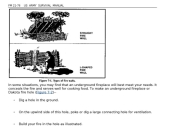
 2
2




Learnin' as I go... www.jamig4.wordpress.com
Check us out on YouTube... Harn Theory

 1
1




Hans Albert Quistorff, LMT projects on permies Hans Massage Qberry Farm magnet therapy gmail hquistorff
 1
1




 2
2




No rain, no rainbow.
 9
9




Idle dreamer




paul wheaton wrote:researching ...
Using it for a polishing solution: "polishing plow bottoms"
tanning hides.
rubbing on your face for camouflage (it takes the shine off).
Making lye: and with lye you can make soap and lots of other things.
to unclog drains
I read something about dipping the cut part of a potato in ash before planting the potato.
preserving fish?
a dust bath for chickens - killing lice and mites
traction on ice.
apparently, when used right, it can act a bit like a bleach with clothes.
Here is an article that talks about ash vs. lime on soils: http://www.tbars.net/lime.pdf
Some people put wood ash on fresh wood when pruning trees - to help the tree heal.
Live your own dream, let nothing stop you.







 2
2




Hans Albert Quistorff, LMT projects on permies Hans Massage Qberry Farm magnet therapy gmail hquistorff
 1
1




Kathleen Sanderson wrote:Seems like I've heard of ash being used as part of the process for making hominy?
Kathleen
 2
2




 2
2




We use ash in ruts in our driveway and it hardens up like concrete!
 1
1




paul wheaton wrote:I just read this elsewhere on the internet:
We use ash in ruts in our driveway and it hardens up like concrete!
Anybody else experience anything like this?
Check out my podcast! https://allaroundgrowth.buzzsprout.com/ ~ Community Group Chat: https://t.me/allaroundgrowth




Fish heads fish heads roly poly fish heads
 1
1




Dan Fish wrote:I too will dump my ash bucket in my driveway and report back if anything of note happens.
Extend the benefit of the doubt as liberally as you wish it to be extended to you...
 1
1




Fish heads fish heads roly poly fish heads
 2
2




Silence is Golden
For all your RMH needs:
dragontechrmh.com
 4
4




 6
6




Blog: 5 Acres & A Dream
Books: Kikobian Books | Permies Digital Market
 4
4




"Where will you drive your own picket stake? Where will you choose to make your stand? Give me a threshold, a specific point at which you will finally stop running, at which you will finally fight back." (Derrick Jensen)
 9
9









Fish heads fish heads roly poly fish heads




Boost Your Hen’s Laying Power
Use wood ash to supplement your chicken feed. You may be pleased with better lay rates and longer laying periods.
Mix in the wood ash with your chicken feed at a 1% ratio. This may even help to reduce the smell of your chickens, um-well stinky eggs!
Freshen Up Your Fridge/Freezer
Similar to how baking soda absorbs odors, wood ash will do the same. Only ash is free and you probably have a lot of it!
Use about a cup of fine wood ash. Put it in a mason jar or a small bag towards the back of your refrigerator or freezer.
Protect Fine Fabrics
Protect blankets and clothes from moth damage by giving them a little sprinkle of fine wood ash before putting them into storage.
Simply brush off the ash and wash as usual when you bring them out of storage.
 3
3




 1
1




paul wheaton wrote:I have heard of a lot of folks using it in compost or in outhouses, and I've heard from even more folks that it isn't good for the compost pile and does nothing in the outhouse.
 3
3




paul wheaton wrote:I have heard of a lot of folks using it in compost or in outhouses, and I've heard from even more folks that it isn't good for the compost pile and does nothing in the outhouse.
I've been conveying the latter even though I have no significant knowledge in this space. Basically, the first group seems unaware of the second group and the second group seems aware of the first group - that makes me think that the second group is probably more knowledgeable. I'll admit that that's not a lot to go on.

Craig Lewis
 3
3




Blog: 5 Acres & A Dream
Books: Kikobian Books | Permies Digital Market

 3
3




- Tim's Homestead Journal - Purchase a copy of Building a Better World in Your Backyard - Purchase 6 Decks of Permaculture Cards -
- Purchase 12x Decks of Permaculture Cards - Purchase a copy of the SKIP Book - Purchase 12x copies of Building a Better World in your Backyard





|
As if that wasn't enough, a dog then peed on the tiny ad.
The new kickstarter is now live!
https://www.kickstarter.com/projects/paulwheaton/garden-cards
|







